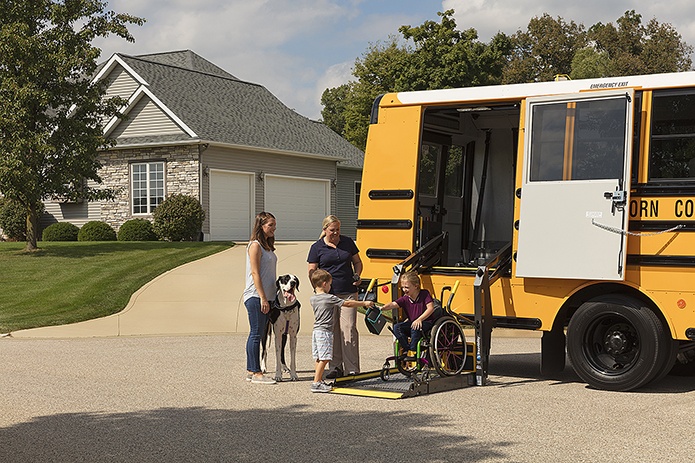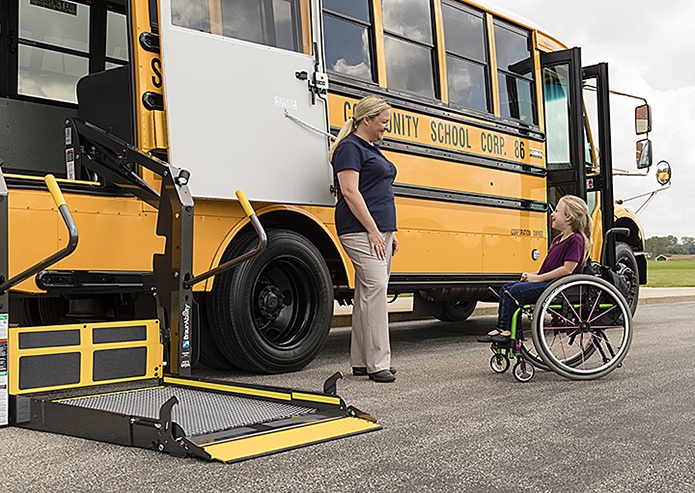
School BUSRide spoke with Kevin Trudeau, director of commercial sales for BraunAbility, to discuss accessible student transportation in the wake of COVID-19. BraunAbility provides mobility products to numerous transportation industries. Trudeau discussed disruptions due to the pandemic, new safety concerns, the role technology plays in the “new normal,” and more.

From an equipment standpoint, what new safety concerns have arisen in special needs pupil transportation due to COVID-19?
Most of the students who use our products are a higher-risk population, and we do not take lightly their decision to trust their health to our services. Since COVID, we have implemented processes to increase peace of mind for those with mobility challenges, including an anti-microbial powder coating on the handrails of our wheelchair lifts and implementing a sanitation process as the last component of any service inspection. We also encourage and incentivize mobile service units, enabling the service technicians to come to the repair unit and limit exposure.
What role does technology or equipment play in reimagining accessible transportation after COVID-19?
Like every industry, pupil transportation is witnessing a high turnover of employees, specifically of equipment operators. This turnover forced us to accelerate our virtual education and certification efforts. In the past we would schedule onsite, in-person trainings. Today a brand-new operator can scan a QR code on our wheelchair lift and read instructions or watch instructional videos to ensure they are operating the equipment correctly or troubleshoot any issues. We still believe in the value of in-person trainings, but we recognize the need for more versatile and virtual options in today’s era, whether during COVID times or beyond. This and our sanitizing processes are changes that are here to stay.
What best practices do you recommend for districts in a post-COVID transportation environment?
Our best advice to special needs transportation providers right now is to stay current on safety operations, commit to a thorough pre-trip inspection cycle, and make use of OEM and vendor resources for operators. With the quick scan of the QR code on products, our new virtual training and troubleshooting content is now so easy to access. Other equipment providers can provide similar services for their own products.
In a post-COVID school transportation environment, our loading and unloading training procedures have not changed. We still focus on safety of the customer above all and meeting them at their comfort level.
What vehicle- or equipment-based steps can districts take – whether in practice or with technology – to prep their operations for future crises?
This timeless advice still applies in a post-COVID transportation environment – be sure you are conducting pre-trip inspections and conducting preventative maintenance on all your equipment. Many vehicles have been sitting through COVID due to less operating requirements. If your fleet has been idle for more time than is normal, it is especially important that you are regularly running the equipment, taking it for test drives, and ensuring it is ready and able to operate despite any down time.
This is a critical time for the future of the pupil transportation industry. For our part, BraunAbility is excited about our collaboration with Q’STRAINT and the potential to not only make wheelchair securement easier and faster, but also touchless and therefore safer as well. This partnership could not have come at a better time.


